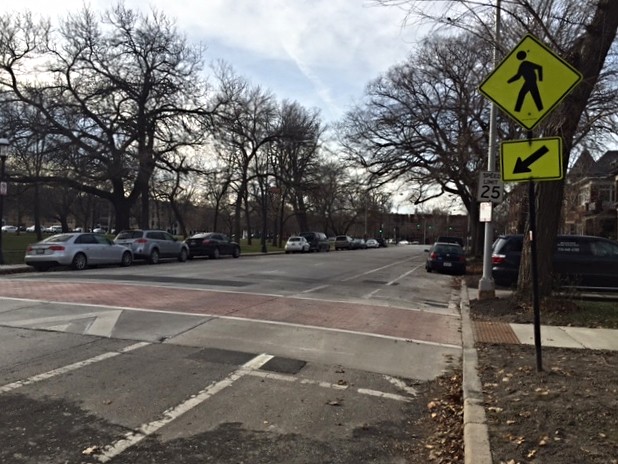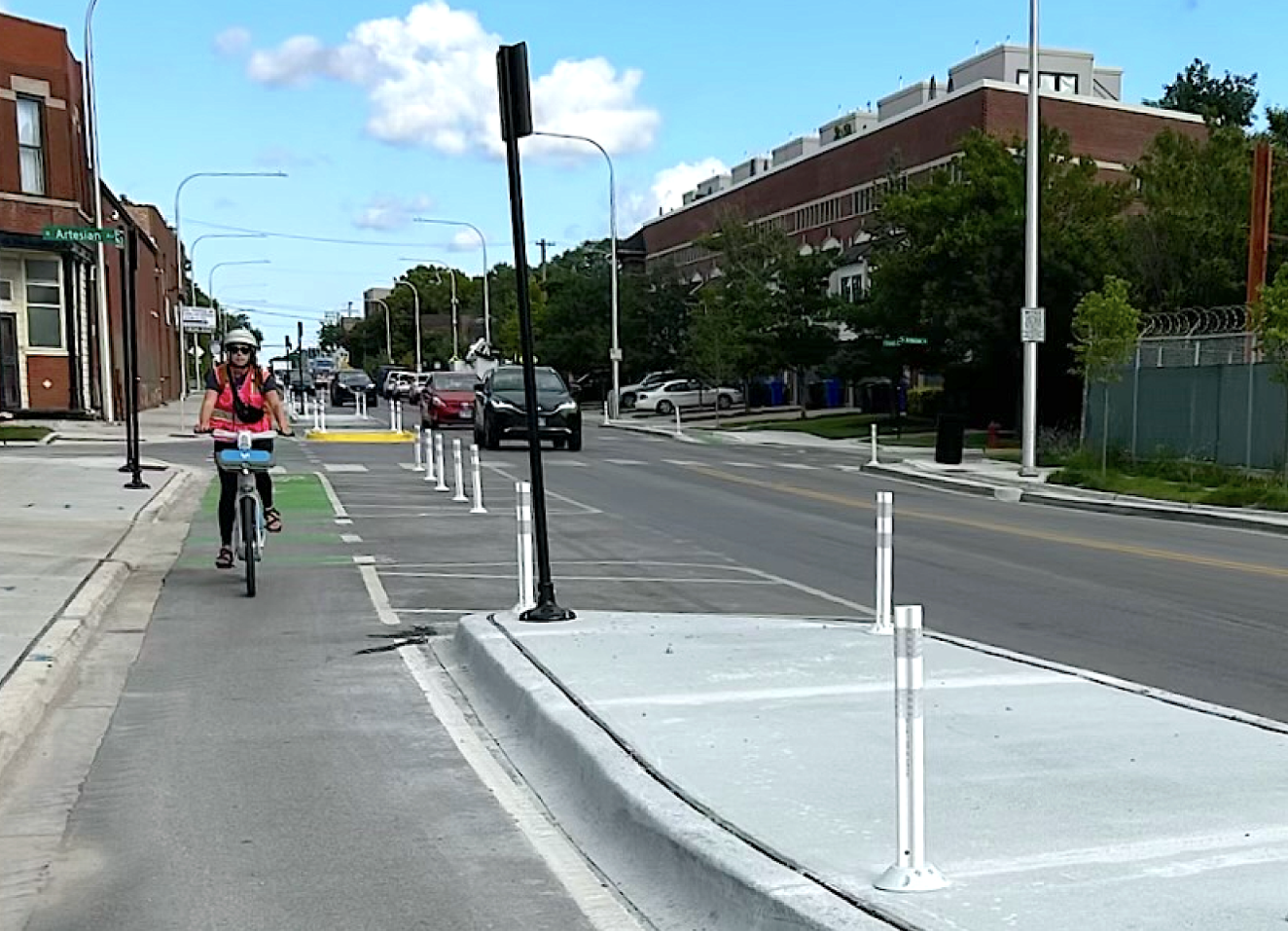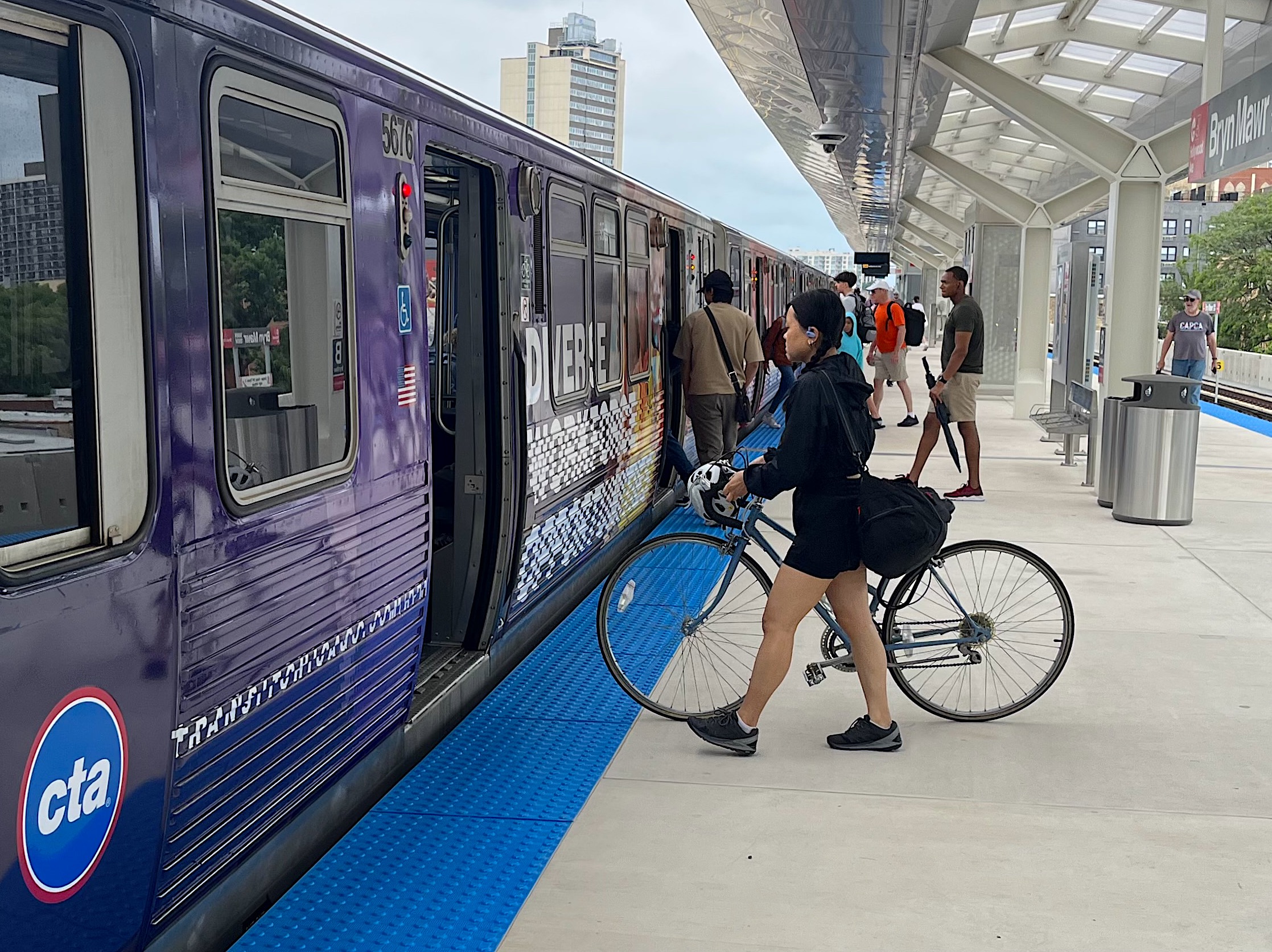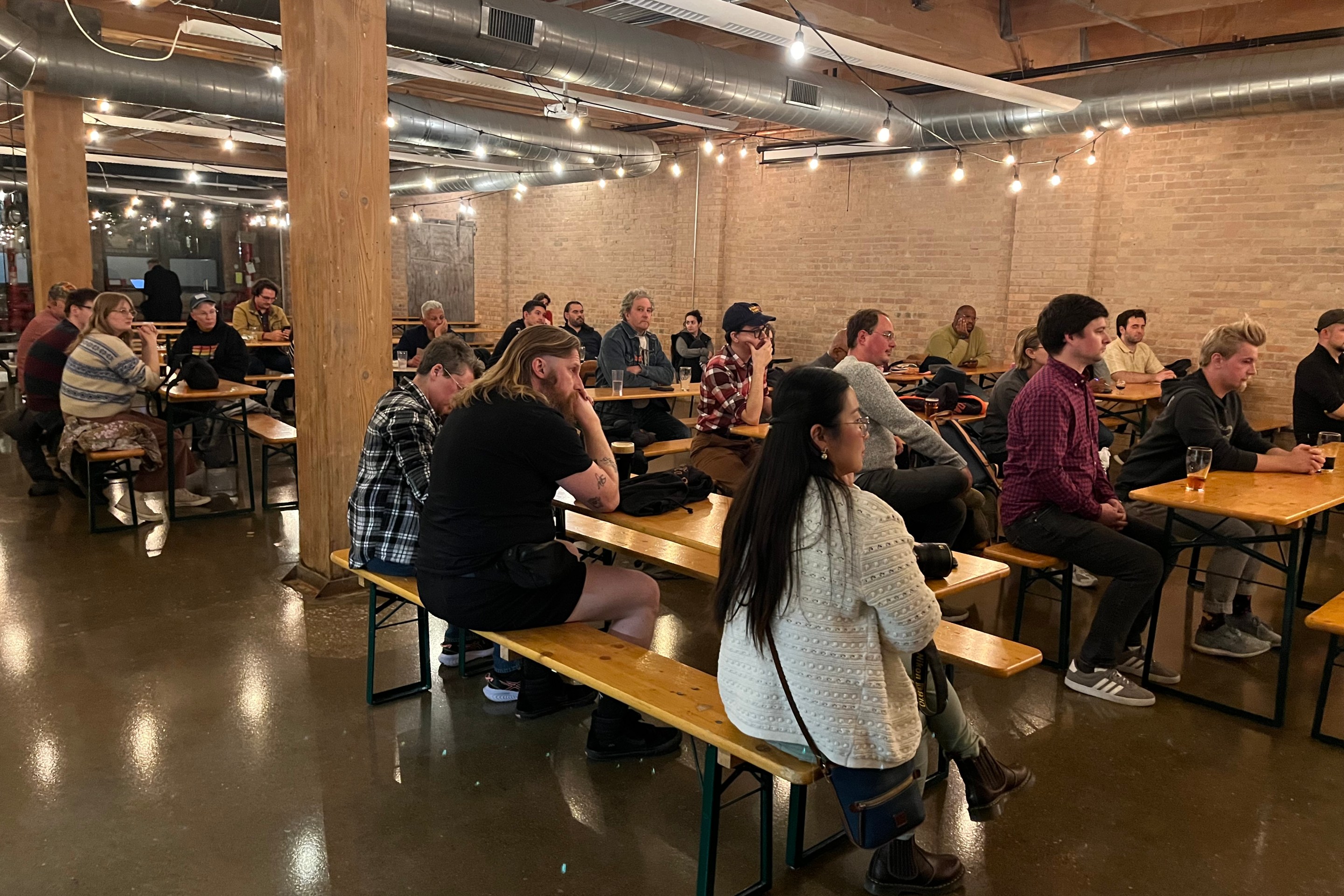Thanks to advocacy from neighbors, the wide roadway on the north side of the Palmer Square green space has been calmed. Last month, the Chicago Department of Transportation converted two marked, mid-block crosswalks to raised crosswalks, aka speed tables. As a result, drivers are hitting the brakes on street where speeding was formerly the rule, making it much safer to walk the park and play within it.
Neighbors have been calling for the safety infrastructure for years, because this quarter-mile stretch of Palmer Boulevard has three westbound travel lanes, with light traffic volumes and no stoplights or stop signs, which encourages speeding.
When Streetsblog writer Steven Vance and contributor Justin Haugens measured speeds during the evening rush with a speed gun, they found that 75 percent of motorists were breaking the posted 25 mph speed limit. About a third were driving over 30 mph, and a handful were going faster than 40 mph next to a park that gets heavy use by families with small children.
A road diet would have been a logical solution to the speeding problem. However, nearby churches use the central travel lane for Sunday parking, which isn’t technically legal but has been tolerated by aldermen for many years. Therefore removing one of the lanes might have been politically challenging.
But getting the raised crosswalks put in turned out to be surprisingly challenging as well. In 2013, Andrea Keller, who lives on the block with her young family, said she collected over 100 signatures on a written petition in favor of the speed tables in 2013. The following year, she launched an online petition, which garnered over 70 signatures. Logan Square Preservation and the Homeowner’s Association of Palmer Square eventually endorsed the idea, and 32nd Ward alderman Scott Waguespack said he was open to funding the speed tables with ward money.
The only thing that was stopping Waguespack from approving the project was a handful of residents who repeatedly contacted him to oppose the idea, according to his chief of staff Paul Sajovec. Some of this resistance was likely due to confusion between the difference between speed humps and speed tables. The latter have a longer cross-section, so they’re unlikely to cause cars to bottom out or create loud noise as vehicles pass over them.
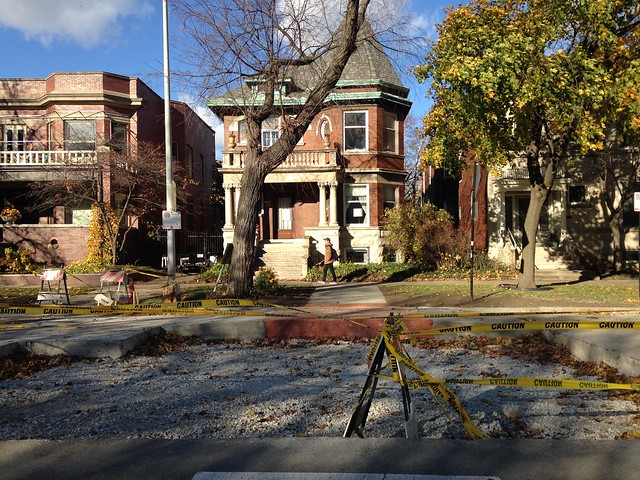
However, Corrine Bradley told me her opposition to the raised crosswalks was philosophical. Since all drivers might be required to hit the brakes before going over the speed tables, “you’re penalizing everybody, not just the speeders,” she said.
Fortunately, most of the neighbors eventually dropped their opposition after they learned how the speed tables would work. “The raised crosswalks are more of a visual cue that a physical obstruction,” Sajovec said. “A car going 15-17 mph can navigate them without slowing down. That mitigated some of the concerns.”
However, when I recently observed traffic on the street, most drivers were braking before proceeding over the speed tables. On a street that was formerly plagued by speeding, that’s a very good thing.
While the Chicago Department of Transportation originally estimated the two crosswalks would cost $40,000 out of the ward’s $1.3 million in annual discretionary funds, the final price tag was $115,000. That was because CDOT wound up including curb-and-gutter work they felt was necessary in order to prevent stormwater from collecting around the speed tables.
Speed humps generally cost $4-10,000 per block. However, they weren’t an option at Palmer Square due to the street width.
“We take our menu money very seriously, and we’re very mindful we can’t do this kind of project anywhere people are concerned about pedestrian safety,” Sajovec said. “But there was a high level of concern expressed here, because of the length of the block, the multiple lanes, and the fact that this is a very active green space. We’ll be interested to see how it changes the dynamic. We’re hopeful it’s going to be a positive improvement.”
